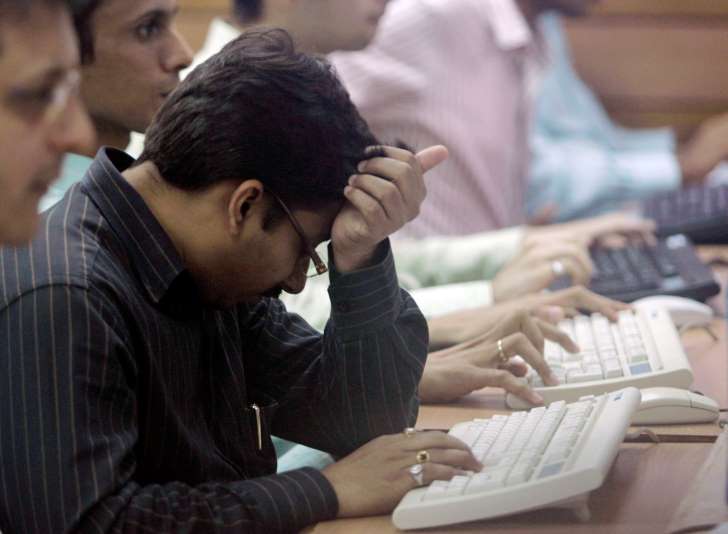January 20, 2016
MUMBAI, INDIA: Snapping the rare gains of previous session, the S&P BSE Sensex tumbled over 400 points on Wednesday to trade just a tad above its crucial psychological level of 24,000, while broader CNX Nifty breached its key 7,300-mark.

January 20, 2016
MUMBAI, INDIA: Snapping the rare gains of previous session, the S&P BSE Sensex tumbled over 400 points on Wednesday to trade just a tad above its crucial psychological level of 24,000, while broader CNX Nifty breached its key 7,300-mark.

Both the headline indices have corrected 20 per cent from their all-time highs of 30,024 and 9,119, respectively, which they hit in March last year.Stating that the economy is losing momentum, brokerage firm Ambit Capital had recently said the benchmark Sensex is yet to bottom out and can fall to 22,000 level in the "foreseeable future". We have compiled four factors that may be dragging markets lower:
1) IMF cuts global growth forecast
International Monetary Fund on Tuesday cut its world economic growth forecasts for the third time in less than a year. The latest World Economic Outlook (WEO) update of the IMF said global growth for this year is seen at 3.4 per cent, up from a 3.1 per cent forecast for 2015, but 0.2 per cent lower than previously forecast."Risks to the global outlook remain tilted to the downside and relate to ongoing adjustments in the global economy: a generalized slowdown in emerging market economies, China's rebalancing, lower commodity prices, and the gradual exit from extraordinarily accommodative monetary conditions in the United States," said IMF."If these key challenges are not successfully managed, global growth could be derailed," it cautioned.
2) China slowdown and stimulus policy
China's economy grew 6.9 per cent in 2015, the slowest pace in 25 years, slipping below the seven per cent mark and sparking concerns both at home and abroad over the continued slowdown in the world's second largest economy. The growth rate, released by China's the National Bureau of Statistics (NBS) on Tuesday, moderated to 6.8 per cent for the fourth quarter, the lowest quarterly rate since the global financial crisis in 2009, and 6.9 per cent for 2015. Now, the weak GDP data has strengthened market expectations the government will unveil more stimulus moves. China's central bank late Tuesday did reveal it would inject more than 600 billion Yuan ($91.22 billion) into the banking system to help ease a liquidity squeeze expected before the Lunar New Year in early February. However, investors believed such a move is usual before the holidays and stopped well short of an actual cut in bank reserve ratios.
3) Fall in oil prices
Crude futures slumped again in Asian trade on Wednesday; losing more than 2 per cent as US oil dropped towards $27 a barrel, its lowest since 2003, on worries about global oversupply. That came after the International Energy Agency, which advises industrialized countries on energy policy, warned that oil markets could "drown in oversupply" in 2016.Brent futures dropped 49 cents to $28.27 a barrel after settling up 21 cents, or 0.7 per cent, in the previous session. The crude fell more than 2 per cent to $28.13 earlier on Wednesday, not far from the 12-year low hit on Monday.
4) Rupee falls to 28-month low
The domestic currency has fallen to lowest level since September 2013 at 67.95 against the dollar on Wednesday, triggering FII outflows. Foreign investors have sold shares worth Rs 6400 crore so far this month, the data on the BSE showed. Weakness in rupee hurts overall gains on existing investments.
Courtesy: Business Today (With inputs from Agencies)







































































































